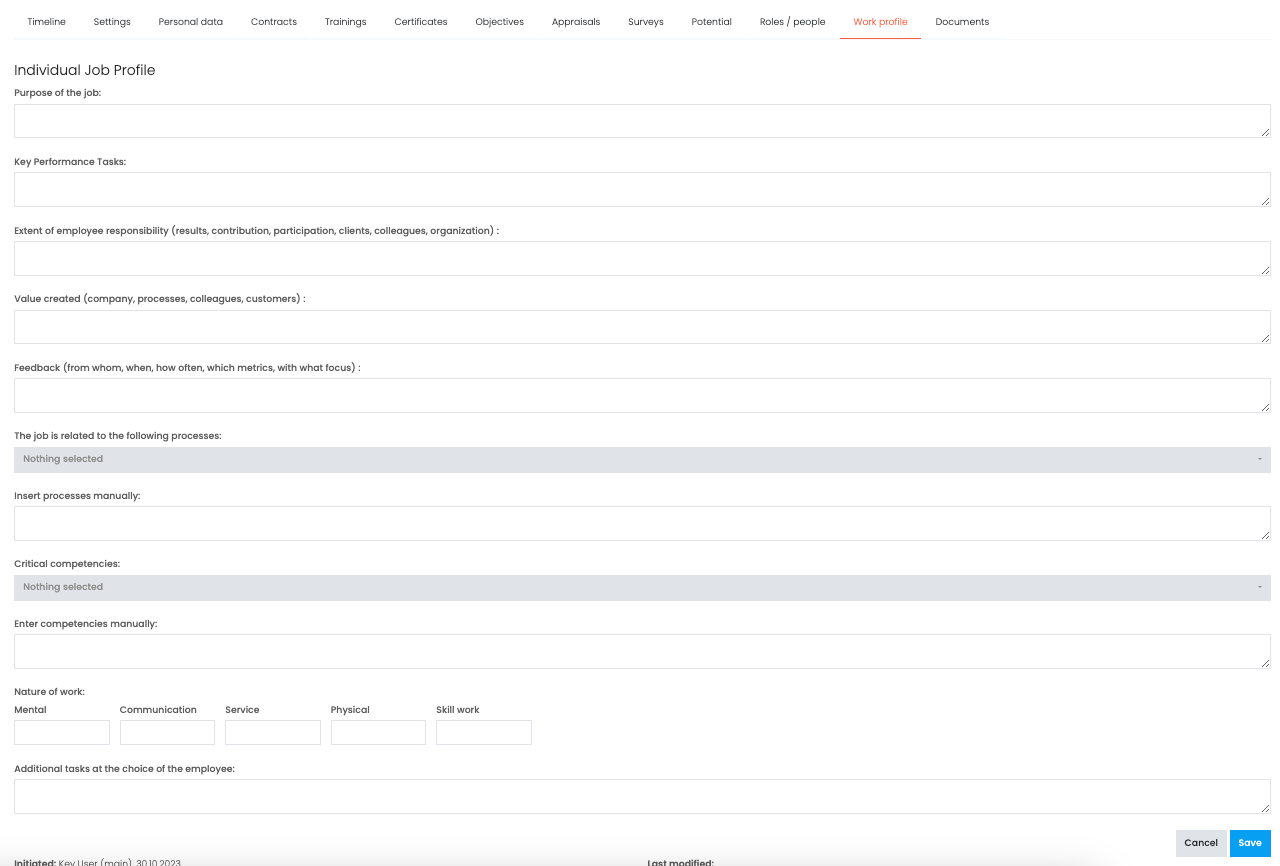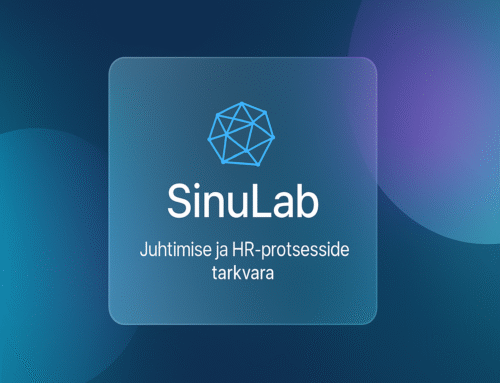The shift towards a more personalized approach in the workplace is increasingly evident. The new generation entering the workforce values individual development opportunities, meaningful work, and a balanced life. Employers must consider these factors when proposing activities or measures to attract this new generation.
What can a manager do to create meaning and value in work?
How can a manager be both a supporter and a guide while also providing employees with the opportunity to find the most important points of reference for themselves?
One tool for this is the Individual Job Profile, which we will discuss in more detail.
The I-Job Profile is not a completely new concept. Job profiles have been created in our companies and organizations before, much like job descriptions. Let’s take a closer look at these concepts to clarify what they are and their purposes.
A Job Profile is typically an internal document of the company that briefly describes the main characteristics of the job. It is especially important to define the purpose of the job and the value it creates.
A Job Description, however, is a very detailed document that outlines the requirements for the position, detailing the job content, necessary competencies, prerequisites for the position (education, experience, languages, etc.), and often the level and/or salary range of the position.
An Individual Job Profile is a profile (document) created specifically for an Employee that includes:
- Job purpose
- Importance to the organization
- Description of the value created by the job
- Scope of responsibilities
- Specific key performance tasks
- Feedback processes
- Connection to processes
- Critical competencies and additional tasks based on the Employee (interest, potential, development needs, etc.)
The Individual Job Profile is created in collaboration with the Employee, unlike the traditional Job profile and Job description, which are typically created unilaterally by the Employer. The creation of an I-Job Profile can be initiated by either the Employee or their direct supervisor, primarily for a deeper understanding of the job and to support one’s performance. It is also useful to involve an HR manager or specialist if such competence is available in the organization.
Personally, I recommend starting with the I-Job Profile once the Employee has settled into their new role and understands the organization’s expectations and needs, and already has some experience with the job. Why? Because then the Employee’s contribution will be more meaningful. A very fresh Employee may not yet have the necessary input, and the I-Job Profile could become a vague, forced document. The I-Job Profile is not a vision of the future but a mapping and understanding of the current situation.
The I-Job Profile exercise, in collaboration with the Manager and Employee, can also be used to refresh or better understand the Job content. It is crucial to discuss and think through the value created. What is the purpose of the Job?
Such profile creation and discussion are essential for a personalized approach, considering the Employee’s wishes and expectations and linking future prospects with career plans and development needs. From this conversation between the Manager and the Employee, some very necessary agreements or action plans for the future may emerge.
Every employee, even those with long tenure, could benefit from an I-Job Profile. The job profile should be reviewed as needed or at least every two years.
Benefits
Implementing an Individual Job Profile can significantly enhance employee motivation and satisfaction. When employees feel their work is meaningful and their contributions are valued, their engagement and commitment to the organization increase. The I-Job Profile helps employees clearly see the impact and value of their work, which in turn boosts job satisfaction and productivity.
Additionally, the I-Job Profile helps avoid work-related conflicts and confusion by clearly defining job responsibilities and expectations, ensuring both parties are on the same page. This sets the foundation for open and trust-based communication between the Manager and Employee, essential for successful collaboration and teamwork.
Guidelines
- Initiation and Collaboration: Start the I-Job Profile creation process once the employee has settled into their role. This ensures the employee can provide substantive and valuable input. The process can be initiated by either the employee or the manager.
- Involve Relevant Parties: Involve the HR manager or specialist if such competence exists within the organization. Their input can be valuable in creating the job profile and mapping out the employee’s development needs.
- Structured Approach: The I-Job Profile should include specific elements such as job purpose, value created, scope of responsibilities, specific key performance tasks, and feedback mechanisms. Discuss and map these out in collaboration with the employee.
- Regular Review: Review and update the I-Job Profile as needed or at least every two years. This helps ensure the profile remains relevant and meets the changing needs of both the employee and the organization.
- Personalized Approach: Tailor the job profile to the employee’s individual interests, potential, and development needs. This helps create a motivating and supportive work environment for the employee.
In conclusion, the use of an Individual Job Profile is an effective way to enhance the meaning and value of work, support Employee development, and improve the overall performance and satisfaction within the organization.
In SinuLab software, we have created a handy Form for creating a Individual Job profile, which every Employee or their Manager can initiate, change and supplement. The work profile can be linked to the processes described in the Performance Management solution or keywords can be added manually.
You can see an example of a personal work profile here (click on the image to view):






Leave A Comment